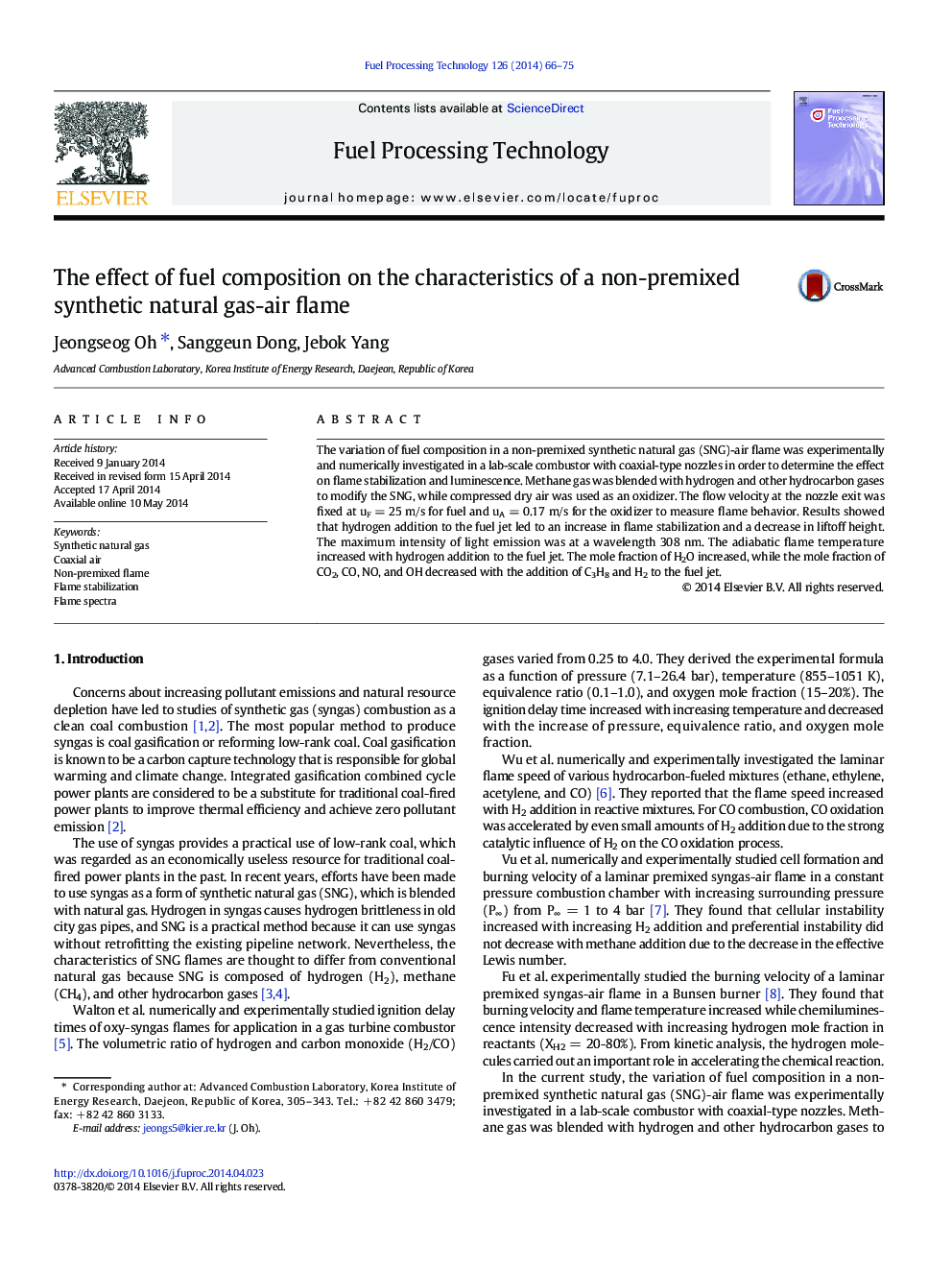| Article ID | Journal | Published Year | Pages | File Type |
|---|---|---|---|---|
| 209702 | Fuel Processing Technology | 2014 | 10 Pages |
•The variation of fuel composition in a non-premixed synthetic natural gas-air flame was investigated.•Methane gas was blended with hydrogen and other hydrocarbon gases to modify the SNG.•Hydrogen addition to the fuel jet led to an increase in flame stabilization and a decrease in liftoff height.•The adiabatic flame temperature increased with hydrogen addition to the fuel jet.•The mole fraction of CO2, CO, NO, and OH decreased with the addition of C3H8 and H2 to the fuel jet.
The variation of fuel composition in a non-premixed synthetic natural gas (SNG)-air flame was experimentally and numerically investigated in a lab-scale combustor with coaxial-type nozzles in order to determine the effect on flame stabilization and luminescence. Methane gas was blended with hydrogen and other hydrocarbon gases to modify the SNG, while compressed dry air was used as an oxidizer. The flow velocity at the nozzle exit was fixed at uF = 25 m/s for fuel and uA = 0.17 m/s for the oxidizer to measure flame behavior. Results showed that hydrogen addition to the fuel jet led to an increase in flame stabilization and a decrease in liftoff height. The maximum intensity of light emission was at a wavelength 308 nm. The adiabatic flame temperature increased with hydrogen addition to the fuel jet. The mole fraction of H2O increased, while the mole fraction of CO2, CO, NO, and OH decreased with the addition of C3H8 and H2 to the fuel jet.
